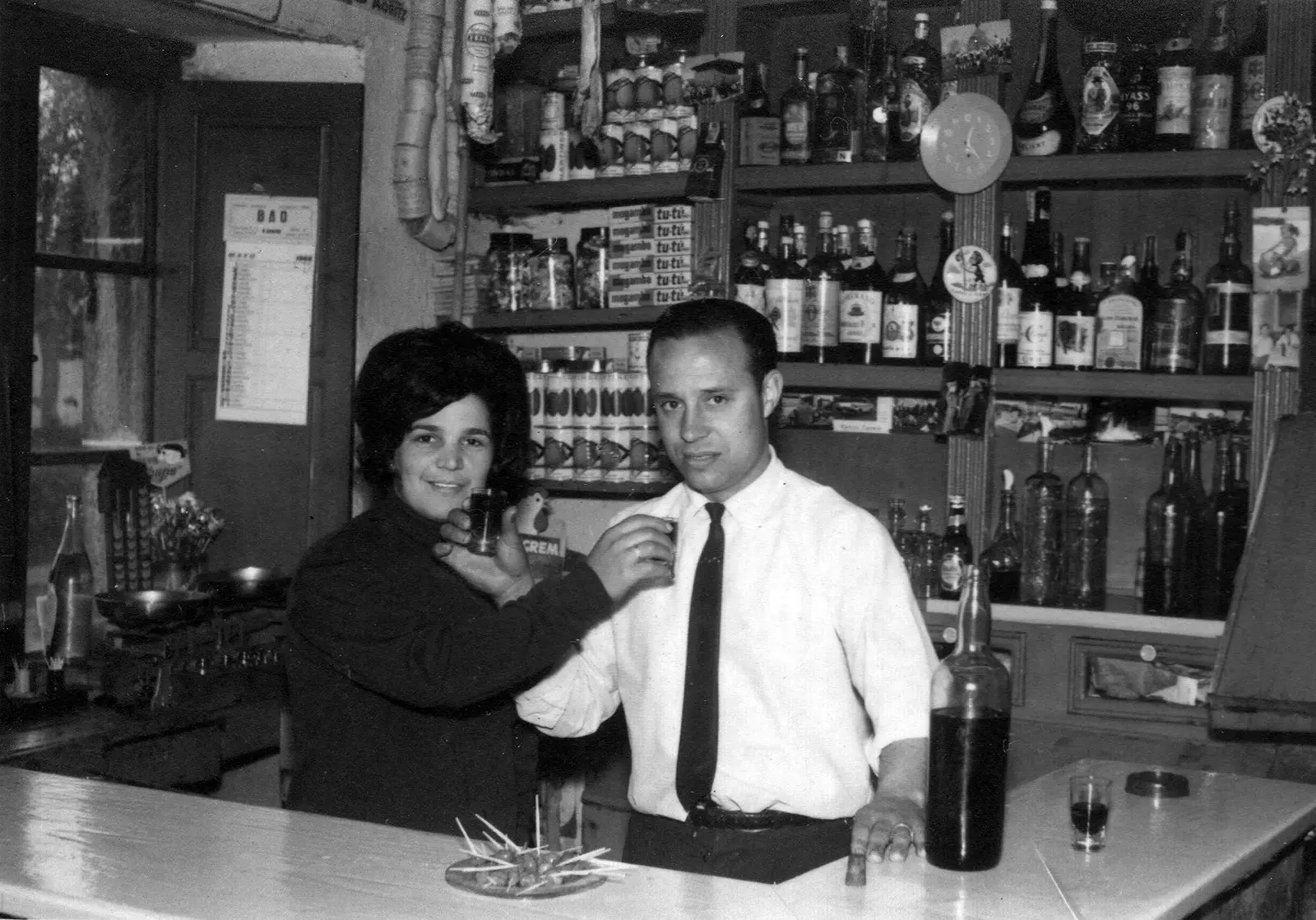
Xoan Corral and Maruja Ares, from Galicia restaurant
Baamonde is a small village in the interior of Lugo. Its barely 350 inhabitants are not indicative of the strategic place that the town occupies and that has turned it into mandatory stop since centuries.
**Baamonde is in the heart of the N-VI **, the road that connects A Coruña with Madrid , just at the point where the N-634 , which runs between Galicia and Bilbao . The center of town is precisely this crossroads. And there, 50 meters away, is the Galician Restaurant .
Baamonde is currently the place where the Northwest Highway (A-6) and the Cantabrian Highway (A-8) meet. This means that the place is **just over 20 minutes from the city of Lugo, 40 from A Coruña and one hour from Santiago or Ferrol**. Those who travel from Madrid or the plateau to the north of Galicia pass, almost compulsorily, through this place in the Municipality of Begonte.
This means that, contrary to what has happened with many towns that were outside the route of the motorway, Baamonde continues to be a place of passage and stopover . This is due to the work done by some of the local catering establishments but, above all, to the fame of Galicia, where people come to eat from far away areas every day.
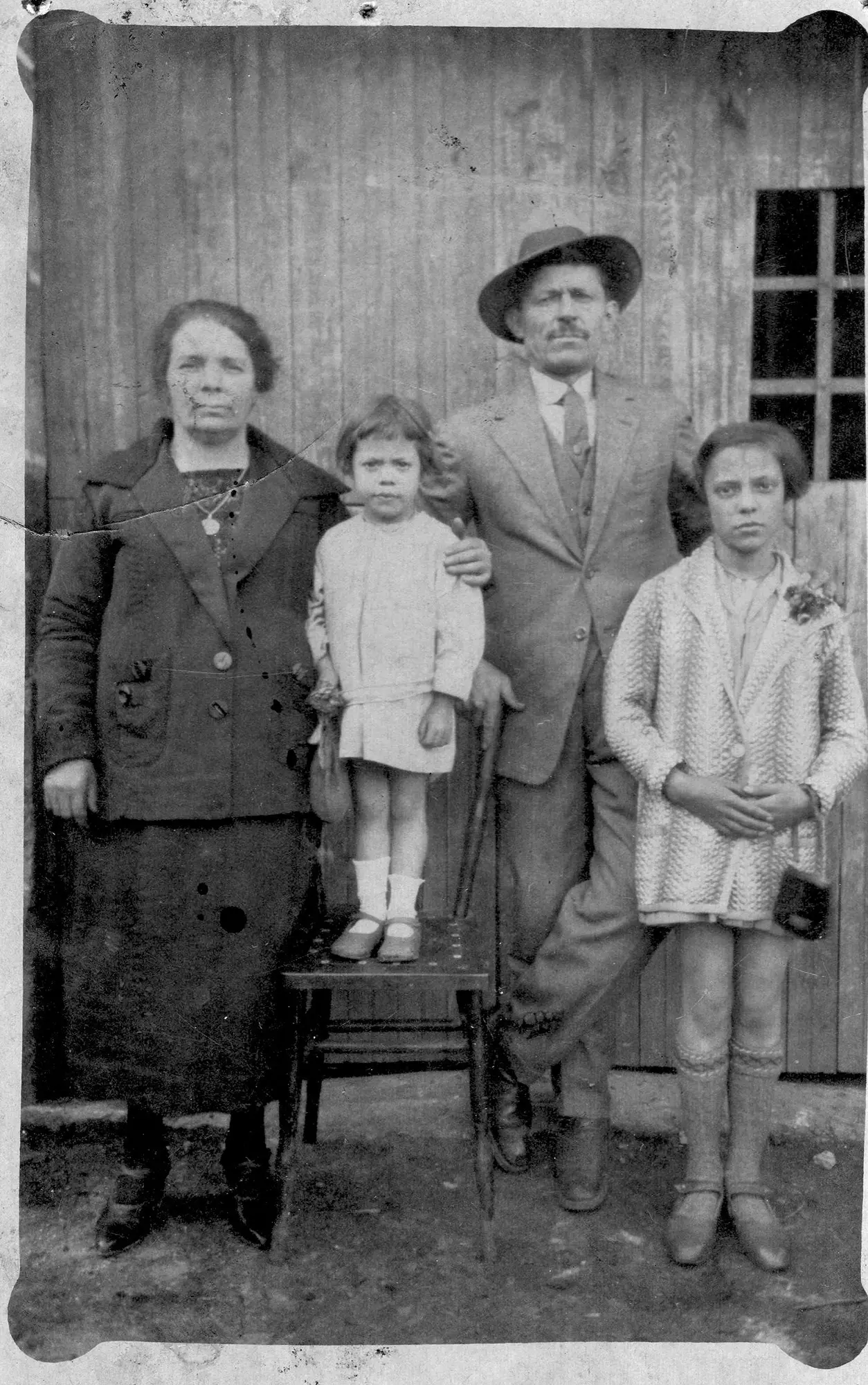
Juan Castro and Rita Vázquez with his daughters (circa 1916)
A CENTURY OF HISTORY
Rita Vazquez and Juan Castro they came back from the emigration in Cuba around 1916 . It was then that they decided to open next to the road junction in his town one of those shops from before, in which one could buy a spool of thread, a kilo of chickpeas, a string of sausages or have a glass of wine . this is how i was born Juan Castro Paz Wines and Foods.
Rita had brought from America a coffee maker of a type unknown here at the time, which caused her local, better known as A of Ribado that by its official name, quickly gained fame and became an obligatory stop on the journeys between A Coruña, Lugo and Madrid.
Their daughters Josefa and Lydia inherited the premises and from them passed, already in 1965, to Xoan Corral , son of the first. around that time A of Ribado was already one famous tavern throughout the province , so Xoán decided expand it and what had been the old stables behind the premises was converted into a dining room.
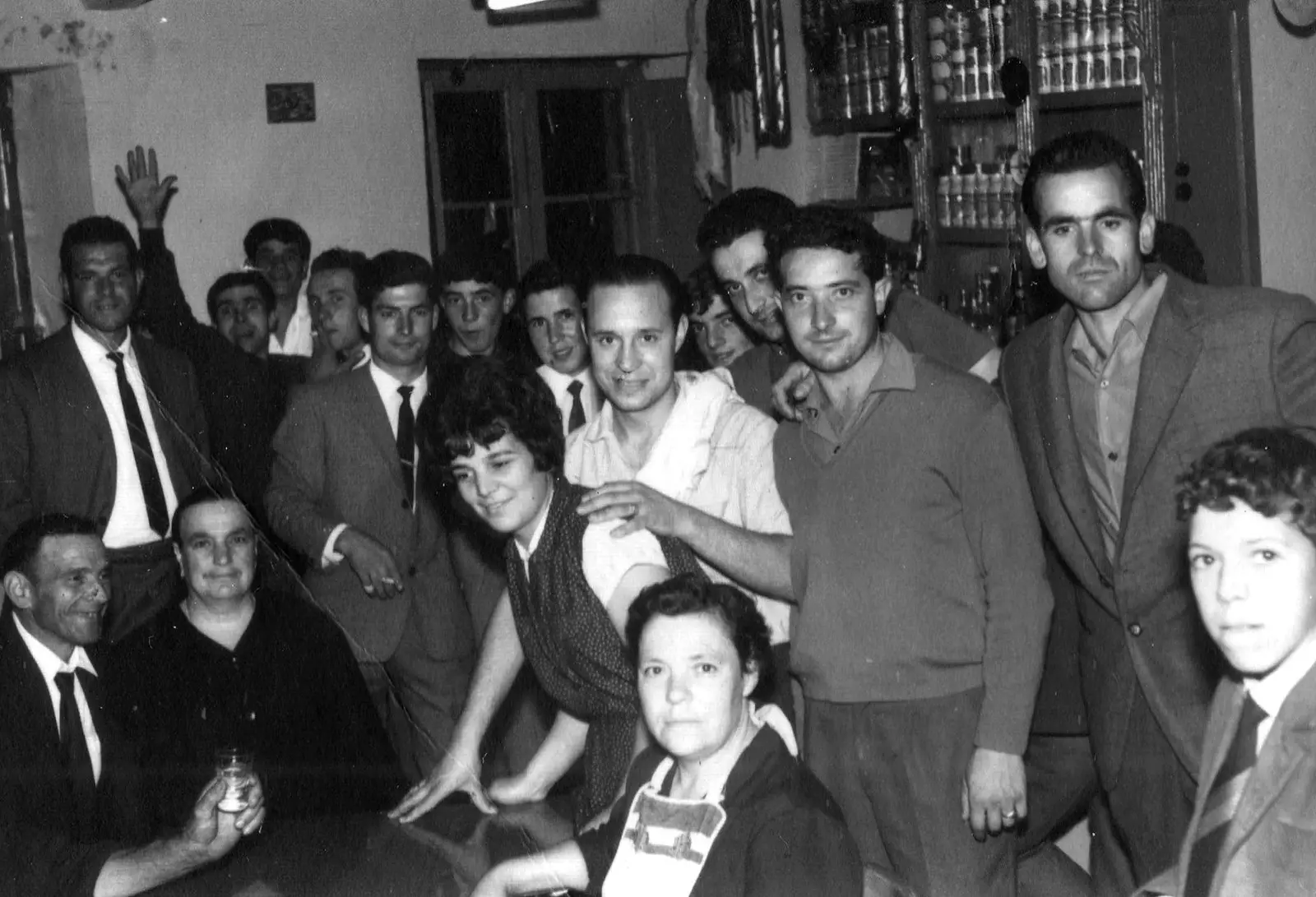
Josefa Castro, daughter of the founders, seated in the foreground, together with family and friends from the tavern
The success was so fast that shortly after the Corrals took over the adjoining house, They tore down the partition and opened a second, larger dining room. At that time Xoán was in charge of the tavern and his wife, Maruja Ares, from the kitchen.
Almost 55 years later, things continue along the same lines. When Xoán died in 2012, his wife and his children took charge of the business. Maruja continues to show up in the kitchen while the fourth generation – Jamy, Montse, Inés and Jes - They are in front of the day to day.
Little has changed since then. Galicia is still an almost obligatory stop for those who move around that area of Lugo, the place remains the same –the same furniture, the same stone walls. They have managed to preserve the tavern atmosphere of always and that every weekend the local public mixes here with the arrival from Lugo, Coruña, Santiago or Asturias.
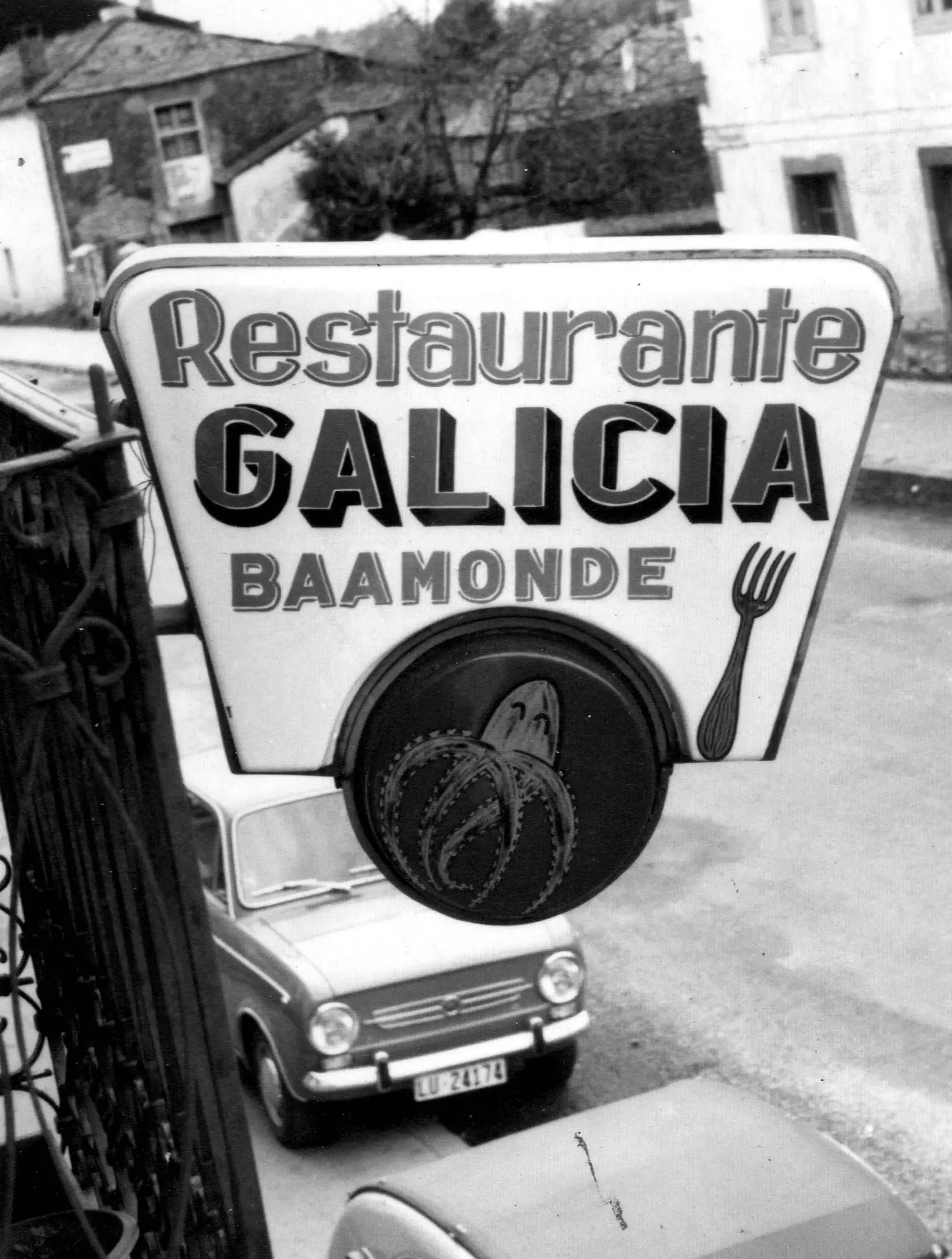
Galicia Restaurant Poster
In the dining room, the old furniture welcomes memories from here and there. The customer has to move the large chestnut bench to sit at the table. In a corner, in winter , there is a burning fireplace.
KITCHEN OF ALWAYS
One of the keys to its success has been the continuity . Many places are updating their proposal and giving the space a facelift as it passes from generation to generation. This is barely noticeable on a day-to-day basis, but after two or three decades the original essence is getting lost.
The Corrals they have been updating things, of course, but have maintained the spirit of a centennial space either. The tavern is still accessed under the vine , the interior is still presided over by the big bar, the ceilings are low , the walls of dark stone , with the character that only the years give. Here and there memories pile up: some clogs, an old iron, a collection of bottles of Estrella Galicia , which are no longer used.
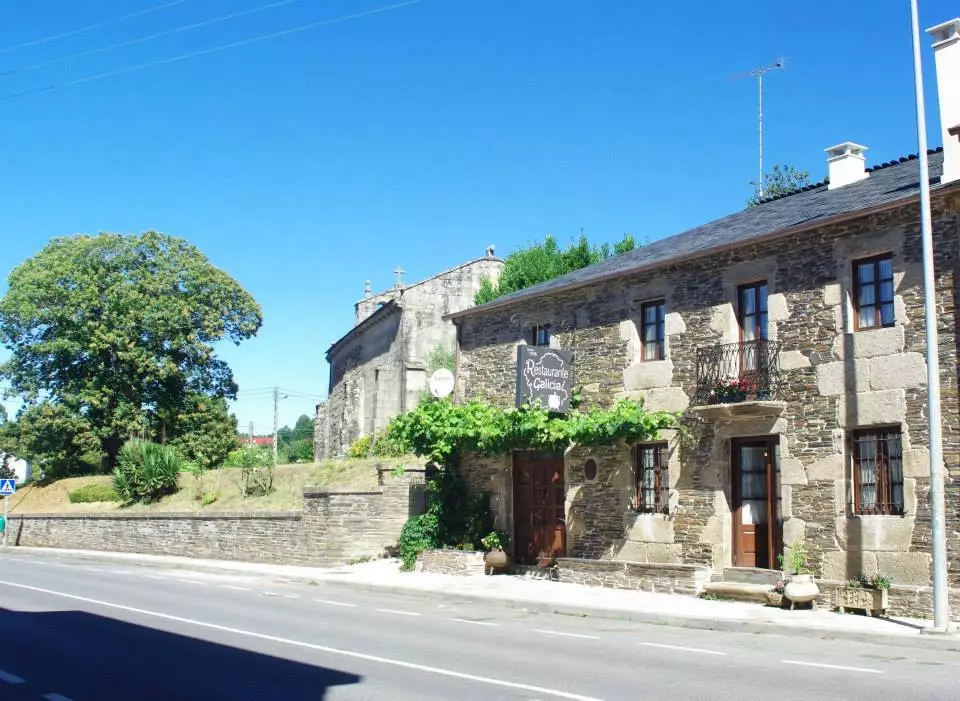
The famous vine that gives access to the Galicia restaurant
And the kitchen? The kitchen is what you would expect in a place like this, the one that will bring to mind, if you are Galician , meals from 30, 40 or 50 years ago . And if you are not, it will make you understand what the kitchen used to taste like around here.
Tripe, cooked soup, broth (here we do not call it Galician broth. We are in Galicia, it is taken for granted), empanada, octopus... classic, cheap starters, the kind that used to allow even the less wealthy clientele to warm their stomachs, in addition to having a glass of wine.
The main ones follow the same line: stewed chicken, veal in sauce, lamb with potatoes, cod, veal steak, cooked in season, etc. Old recipes, flavors from memory no upgrades, no refinements . Each bite is a little trip back in time.
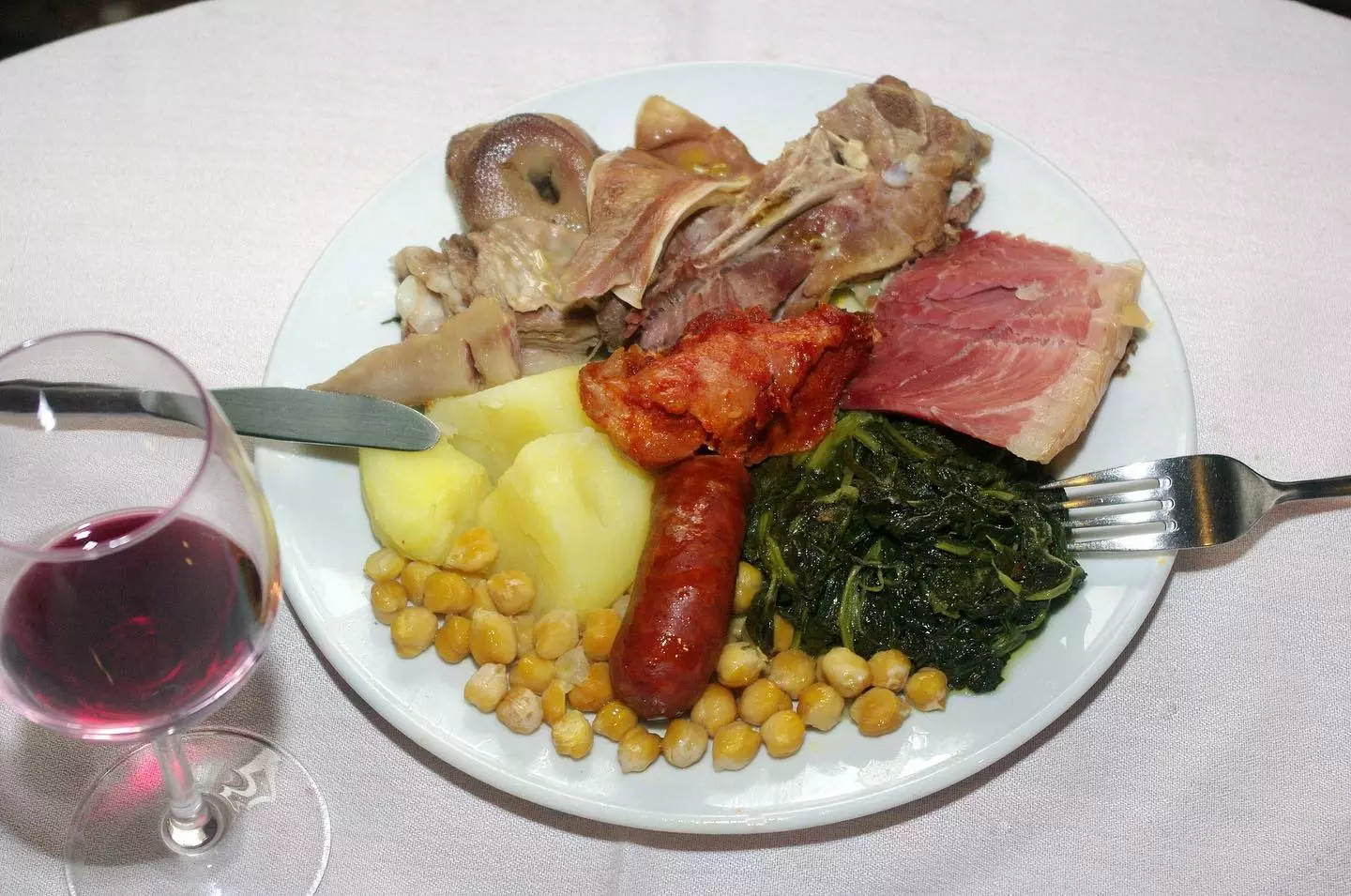
Cocido from the Galicia restaurant
Equally easy desserts: quesada, Santiago cake, country cheese with quince . And, after them, one of the specialties of the house cannot be missing, the pota coffee (from pout) , which is presented here as pota madre coffee.
The Corral are one of those breeds of hoteliers talkative, affable , always ready to start a conversation with customers. Old-school bartenders who understand that treatment is one more incentive for those who come to visit them.
Xoan , the father of the current generation, took that affability one step further and he became a unique character . In the 70's he began to ** serve queimadas **, little by little he refined the ritual, adding a detailed clothing : some old keys hanging here, a wicker hat there.
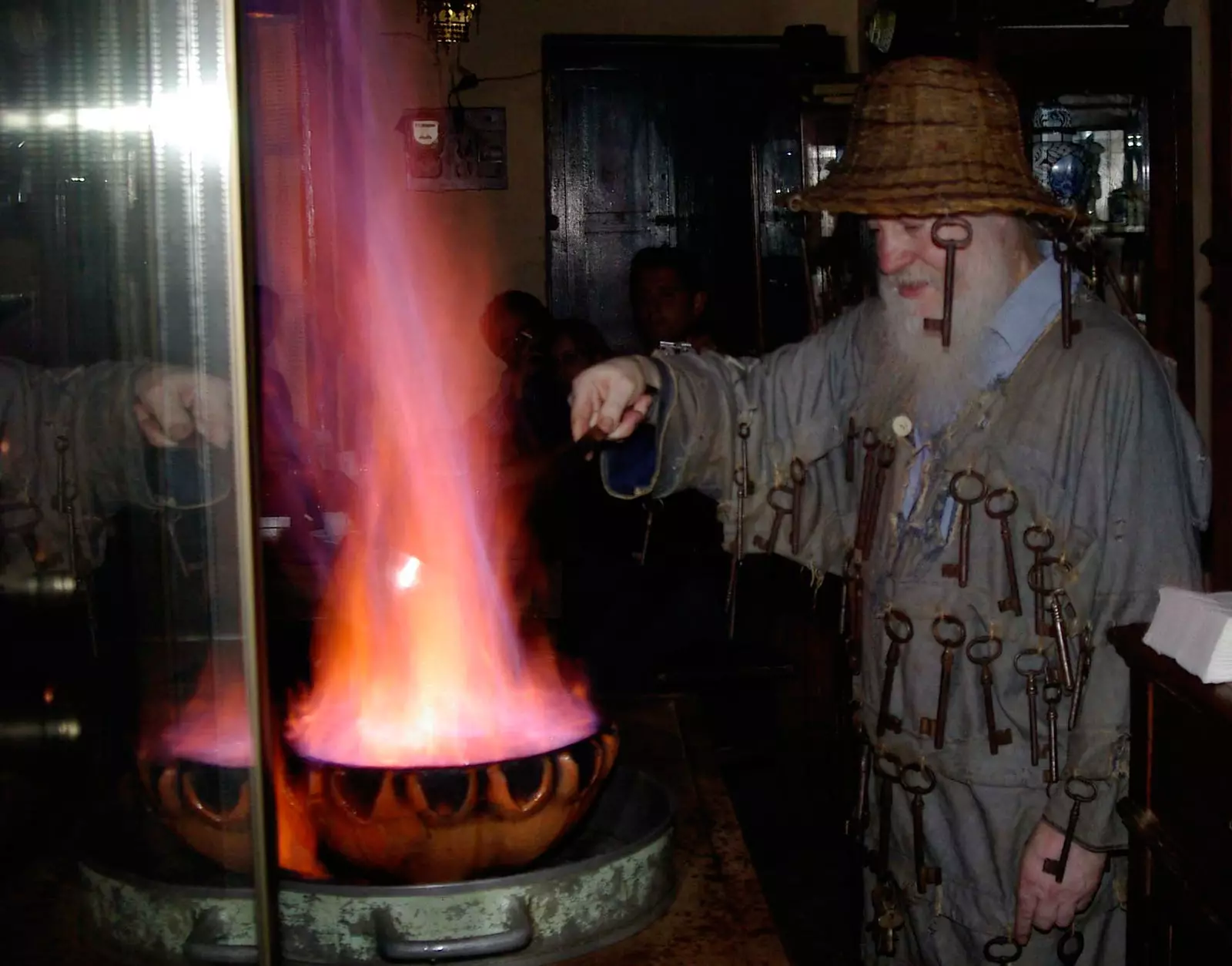
Xoán and his famous queimada
His brother Victor , sculptor, in addition to carving, for example, a curious chapel inside a century-old chestnut tree next to the Romanesque church behind the restaurant, he was in charge of many of the carvings that today adorn the walls of the tavern. And, along with them, of the saints who house the "Holy Water ”. Although this deserves an explanation.
Its famous pota madre coffee arrives at the table in a cast-iron pot, one of those used in the past for cook on fire . Ella jamy comes over and serves him while he chats with the customer. Next to the pot he places a size about 40 cm high, solid chestnut.
Once the coffee is served ask if the client wants holy water . The carving of the saint opens to reveal his secret: inside there is a bottle of brandy that the customer can add to the coffee at will.
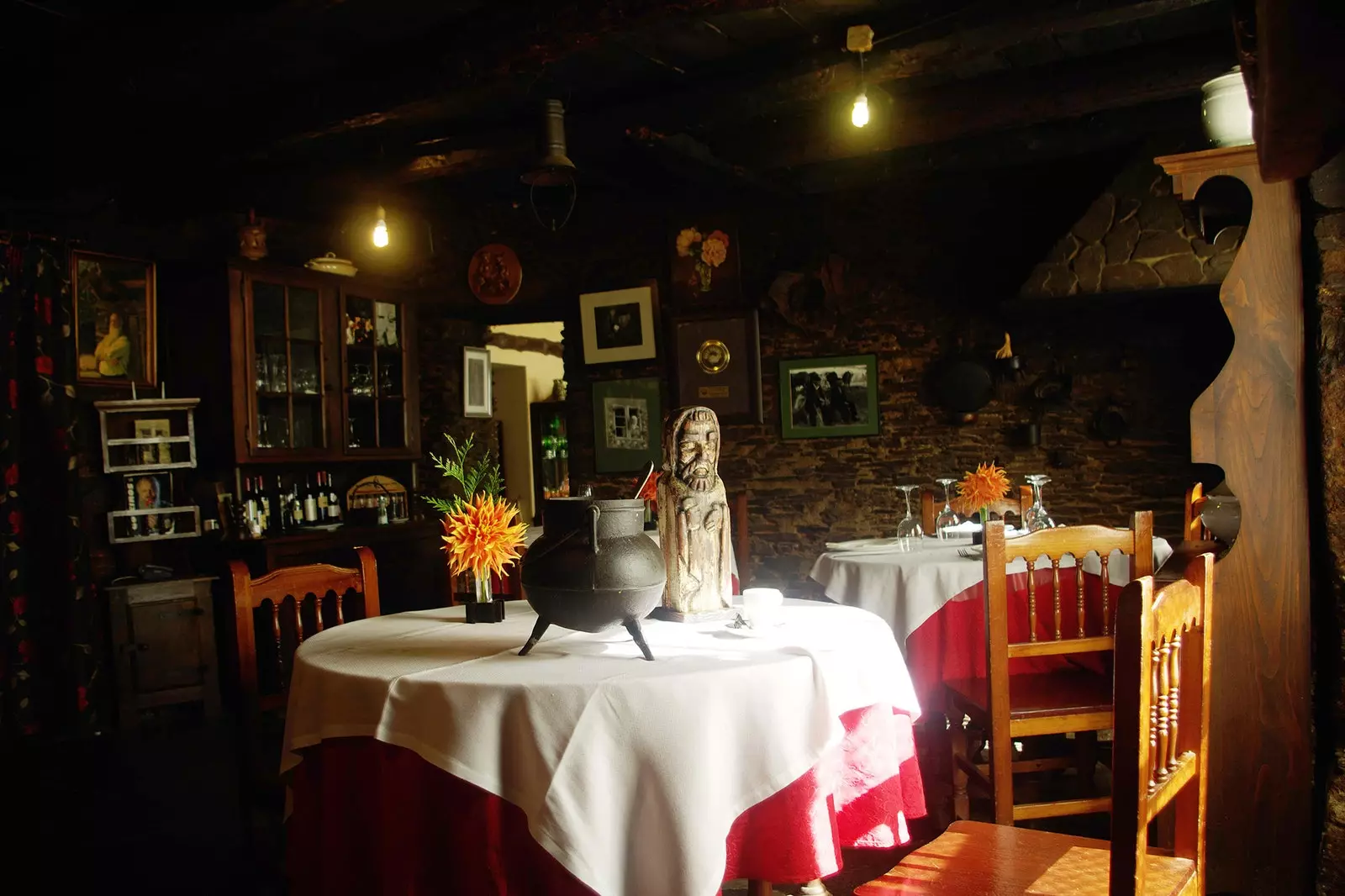
Few things have changed in this corner of Lugo
The whole ritual gives rise to more talks, to anecdotes of the family and the local. 103 years go a long way.
And so the years have passed in Galicia, in which before it was A de Ribado, between talks, wines and meals of always , in a ritual that is repeated year after year and that continues to place Baamonde on the map of taverns that should already be national heritage.
